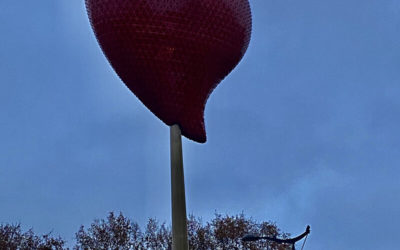How to innovate across systems is one of the questions, leaders ask today ?
Why is this question of major relevance? Because firstly, there is a general feeling, that an enormous amount of the energy that leaders and organizational followers put into the system, is wasted. There also seems to be an emergent truth stipulating that there are too many leaders who are successful individually but collectively approaching the edge of failure because they have not learnt to leverage their intelligences together.
Secondly, today’s business world is an interconnected economy – people are always connected, the web will answer their queries and colleagues are just ‘a few clicks away’. A new generation of connective technologies invites people to participate in collective projects such as Google, Wikipedia, Facebook, My space, etc. where people agree to combine their so called ‘tacit’ or ‘intangible’ assets such as knowledge, relationships and reputation in order to collectively create innovative applications and products.
Thirdly, leaders of global organizations face new levels of complexity and disruptive change. A complex network of alliances such as joint ventures global sourcing partnerships replaces monolithic corporations. Therefore, today’s business leaders have to find innovative ways to guide these multicultural, multi-continent and multifunctional teams across organizational boundaries – the dividing lines – to create the necessary variety of responses they need to address this new era of complexity.
What is one of the corresponding leadership challenge ? Complexity and unpredictable events make it impossible for even the most self-directed, brilliant modern business leader to individually lead a global acting organization. Some leaders start to recognize that experiences and solutions of the past do not necessarily help when dealing with these emergent challenges of today and tomorrow. But knowing what does not work anymore does not necessarily mean that they look for new perspectives and opt for different solutions.
However, there is now evidence that any open system – such as an organization – has the capacity to respond to change and disorder by reorganizing itself at a higher level of organization. There is however a leadership challenge. The elements of the system must have the freedom to take initiatives (challenge 1) and develop the ability to create a repertoire of responses that can match or exceed the number of different stimuli it may encounter in its environment. In order to create this repertoire of new, adaptive and efficient responses, business leaders have to create opportunities for large groups of people (challenge 2) so that they can think, learn and create their future collectively without exactly knowing what the future will be.
How to cope with these challenges? Dare to mobilize the “organizational crossing mind”. Large Groups are a form of a “crossing mind”. As our right and left brain is interconnected to create, so can leaders connect and engage the various organizational sub-systems through large group gatherings. And large group interventions are a powerful tool to enable the whole system to generate new responses, engage in collective efficiency, innovate across systems and reinvent outdated collective patterns of thinking.
Instead of maintaining and strengthening the dividing lines between business units, support and lean functions, old and younger generation, top, middle and bottom lines, courageous leaders decide to invest in large group interventions to release and empower the “crossing mind’.
What about you : What prevents you from organizing a large group intervention. What is the cost you generate by maintaining your organization thinking in dividing lines instead of investing in leading with a crossing mind?




